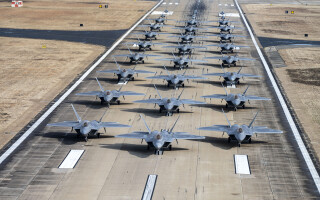Streamlining the aircraft safety-certification process
OtherMarch 06, 2019
The Federal Aviation Administration (FAA), the European Union Aviation Safety Agency (EASA), and the aviation industry are working towards streamlining the certification process for manned and unmanned aircraft with the goal of addressing the technical challenges and reducing the cost of certifying aircraft.
“The FAA has come up with some guidance, but for us in particular we spent a long time setting up our processes to be very efficient,” says Gary Gilliland, technical marketing manager, DDC-I Inc. (Phoenix, Arizona). “This – along with the architecture of the product – enable us to minimize the effort from one release to the other.”
It’s not just small companies or larger corporations that are working together to streamline the process. In fact, “Aviation safety certification is undergoing simultaneous worldwide harmonization in parallel with an explosion in new technologies, with associated challenges,” says Vance Hilderman, chief technical officer, AFuzion Inc. (Los Angeles, California). “The Americas, Europe, and Asia are coalescing on harmonization of standards for both safety and avionics hardware certification, with major updates for each due in the final approval stages.”
In response, the aviation community is mounting products for these challenges: “Directly due to requirements evolved within the FAA, EASA, and FACE, we designed and implemented TrueCore, a commercial off-the-shelf (COTS) graphical processor (CGP) software safety monitor library designed to assist applications in providing a comprehensive solution to address hazardously misleading information (HMI), which allows customers to reach DAL A [the highest certification level] certification of graphics without the need for diverse GPU architectures,” says Dan Joncas, VP of sales and marketing, CoreAVI (Tampa, Florida). (Figure 1.)
Figure 1: COTS-D GPM0001 graphics processing module. Photo courtesy of CoreAVI.
(Click graphic to zoom)
 |
The major challenge revolves around cost. It is too costly to certify these systems – more so as they become more complex with the technological advances made. “Safety-certification processes can be costly; current trends to automate and optimize those processes include model-based development; incorporation of static and dynamic analysis tools to automate parts of the verification process; and system simulation, including test-for-credit on tools, such as Wind River’s Simics,” says Ray Petty, vice president, Aerospace & Defense, Wind River (Alameda, California).
Some steps in the right direction for certifying military systems have taken place over the years. Specifically, “In the U.S., the FACE [Future Airborne Capability Environment] program run by the military has taken the lead in defining the key capabilities and software integration standards needed alongside traditional safety standards to ensure a balance of performance and reliability,” Joncas says. “FACE compliance has become essential for projects with the U.S. military and is now being recognized and adopted or adapted to by other NATO countries.”
The professional association and standards-developing organization SAE International developed the ARP4761 standard, which details guidelines and methods for performing a safety assessment on civilian aircraft, per the organization documents. Industry officials use this standard in conjunction with the ARP4754 to demonstrate compliance with the U.S. FAA and the European Aviation Safety Agency (EASA).
These standards help to define and streamline the certification process and when safety is the number one priority, “the new SAE ARP4761A will clarify the aircraft and avionics integrated safety process and require greater efforts at the aircraft level, forcing more thoroughly integrated safety assessments among suppliers,” Hilderman says. “For hardware, the new A(M)C 20-152A will clarify refined hardware certification processes with increased rigor and also less subjectivity. Also, multicore processing is becoming ubiquitous and the associated recent CAST-32A is forcing greater cooperation and technical rigor between hardware suppliers, RTOS vendors, and avionics software developers.
“I’m old enough to remember the first personal computers and people’s reactions: ‘It’s cool but there’s no software and it won’t serve a practical purpose,’” Hilderman adds. “That view lasted a few years until a tipping point was reached and computer usage exploded. We’re now at that same tipping point with unmanned systems. FAA and EASA have made great strides recently coalescing on workable standards. Obviously, the new ADS-B mandates and applying ADS-B Out to more UAVs is helping, also. Finally, the larger unmanned producers are now finally applying similar safety/reliability standards as for smaller manned aircraft (e.g., Part 23) so that is greatly increasing both aircraft and operational reliability.”





